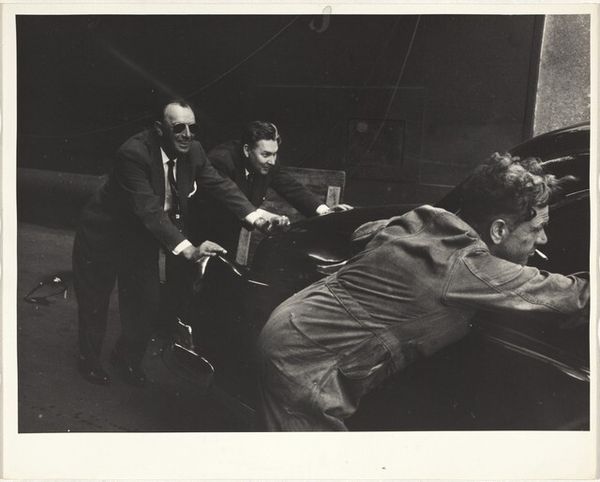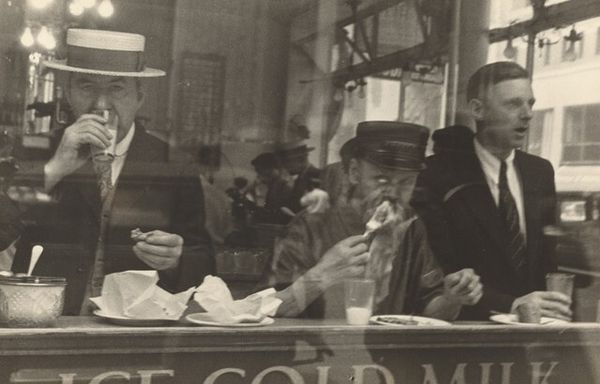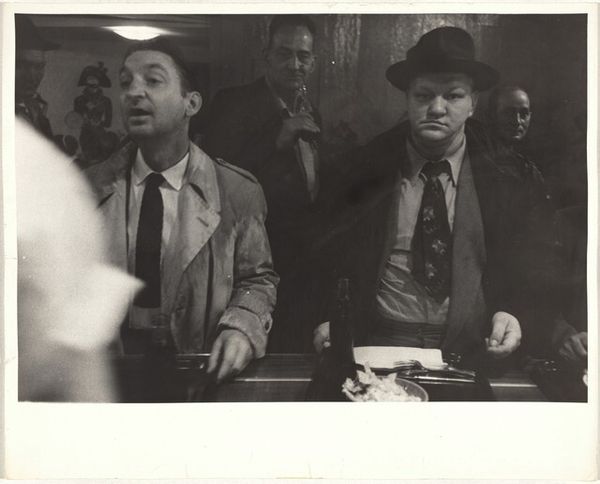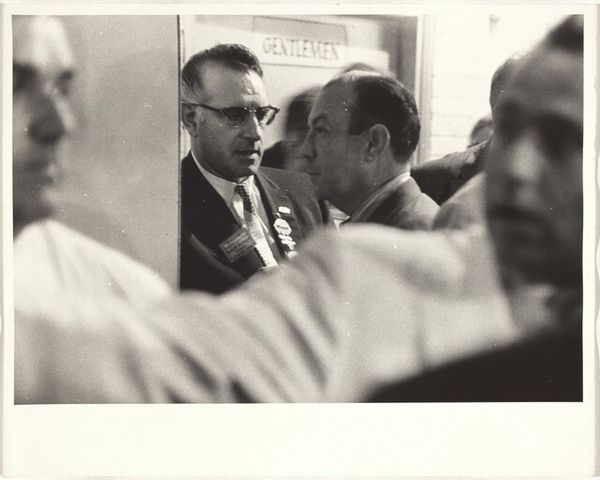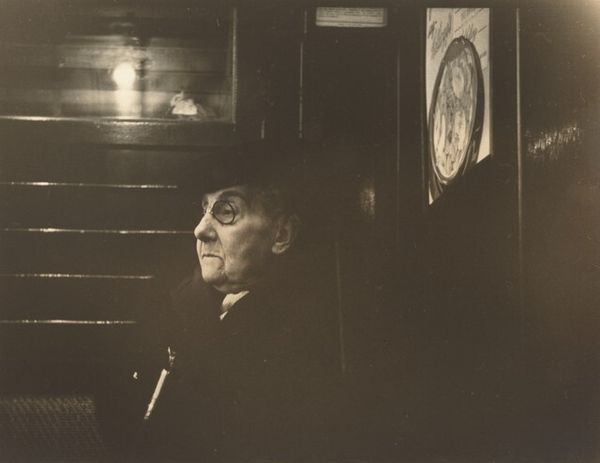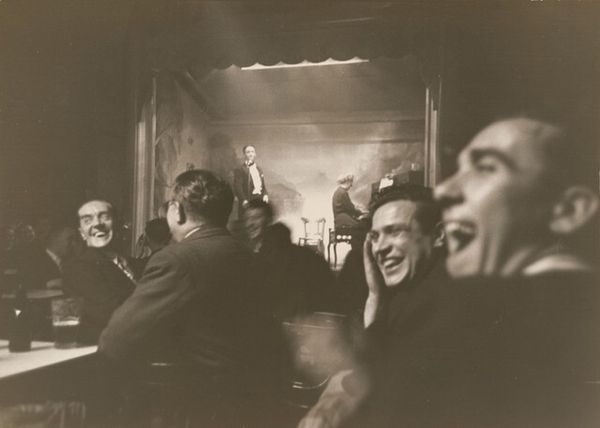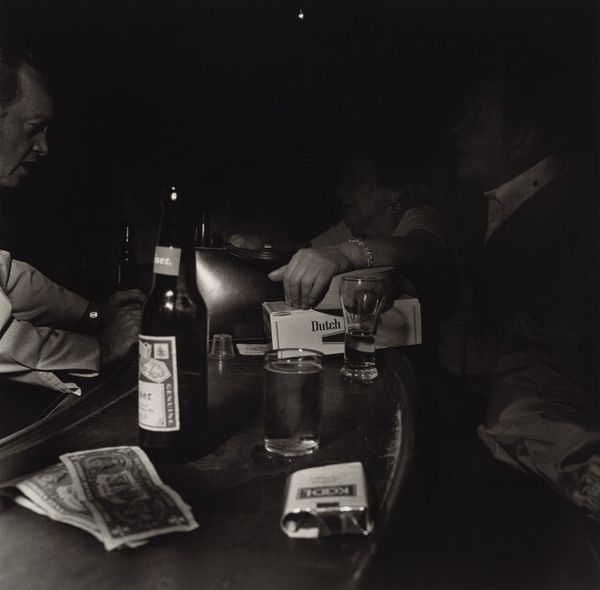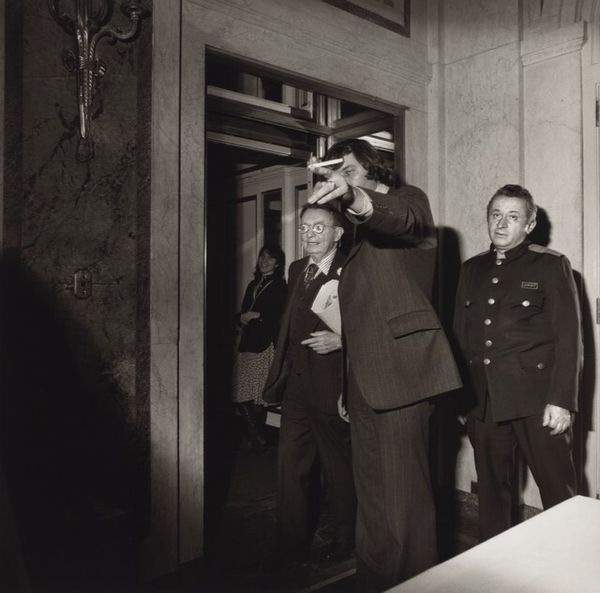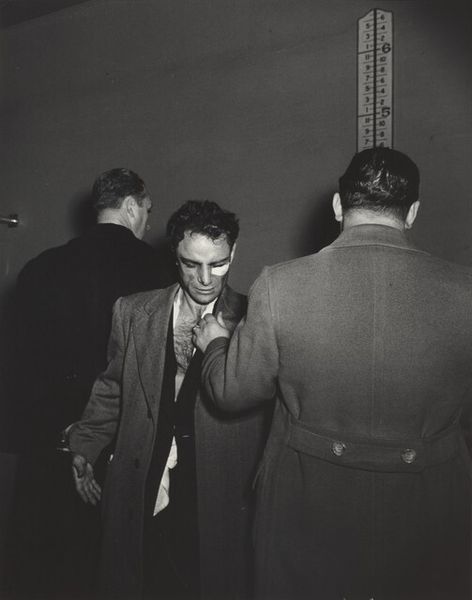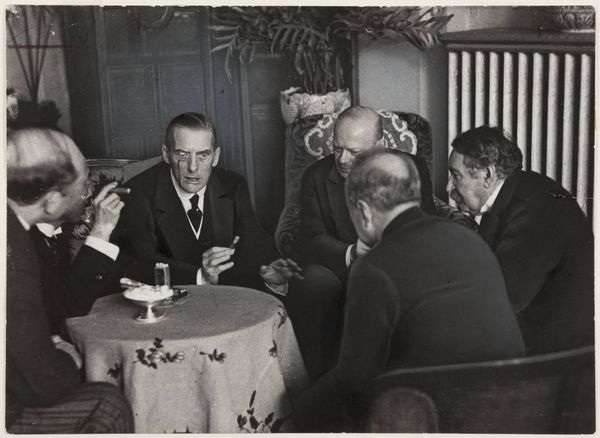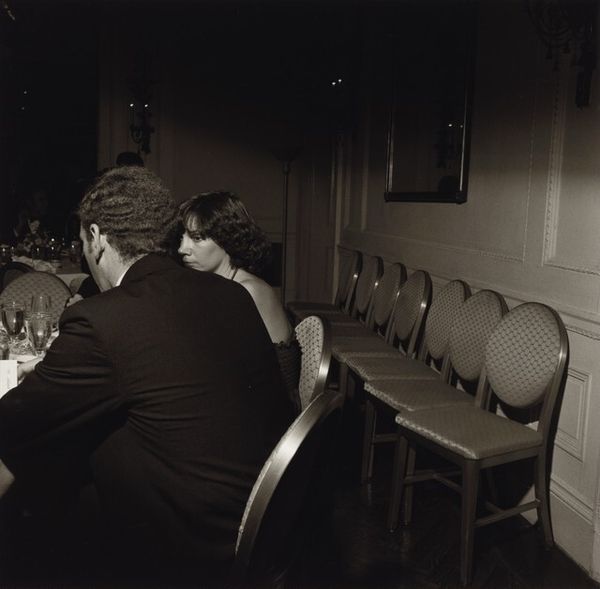
photography, gelatin-silver-print
#
portrait
#
archive photography
#
street-photography
#
photography
#
historical photography
#
group-portraits
#
gelatin-silver-print
#
monochrome photography
#
modernism
#
realism
#
monochrome
Dimensions: image: 22 × 32.1 cm (8 11/16 × 12 5/8 in.)
Copyright: National Gallery of Art: CC0 1.0
Curator: Robert Frank's 1953 gelatin silver print, "Caerau, Wales," offers a compelling glimpse into postwar industrial communities. Editor: It has a sombre atmosphere. The monochrome palette really amplifies a sense of griminess, doesn’t it? Curator: Indeed. Frank was interested in documenting the everyday experiences of working-class communities, capturing their grit but also their resilience amid post-war austerity. Wales, with its coal mining history, became an ideal location for this project. Editor: Look at how the light is distributed - quite uneven. It gives the composition an off-kilter quality, almost unsettling. Is this a recurring stylistic attribute? Curator: You know, Frank's stylistic approach here mirrors his overall artistic goals during this period: eschewing picture-perfect imagery to truthfully depict people's lives shaped by politics, work, and social environments. Notice the dominance of the figures in the smoky interior? The location looks anonymous. Editor: And their expressions are so contained, almost stoic. I would observe how Frank manages the tonal range here. The dark shadows around the room force you to make effort to examine who they all are, but ultimately most end up concealed or partially revealed by darkness. What's with the smoke? Is there some semiotic dimension we should know about? Curator: Well, consider the sociopolitical element – the coal mines and industrial works. But also look at post-war anxiety that engulfed a segment of the population because Frank does that in the American cultural landscape too, with photography and his films, so in my opinion the formal aspects serve social commentary. Editor: Interesting—I'd focused mostly on the surface qualities but hadn't thought about industrial work or anything like that. Curator: Both are equally vital, I think. Frank manages to convey these individuals and their lives with immense consideration, encouraging dialogue about history, community and social identity. Editor: Well, it makes you think about both what we see, and maybe more importantly what has gone unseen. Curator: Precisely. A perfect conclusion.
Comments
No comments
Be the first to comment and join the conversation on the ultimate creative platform.
